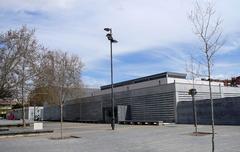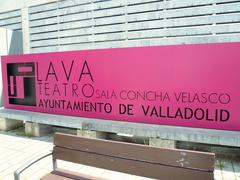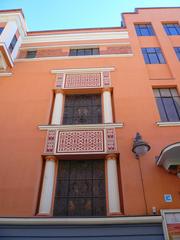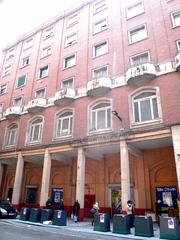
Campo Grande Valladolid: Visiting Hours, Tickets, and Travel Guide
Date: 04/07/2025
Introduction
Campo Grande is Valladolid’s largest and most celebrated urban park, offering a harmonious blend of historical heritage, lush landscapes, and vibrant cultural life in the heart of the city. Spanning over 11 hectares in a unique triangular layout, the park is bordered by Acera de Recoletos, Paseo de los Filipinos, and Paseo de Zorrilla, making it a central and easily accessible oasis for both locals and visitors (EcuRed; Valladolid.com). From its origins in the late 18th century as a semi-rural tract to its transformation into a romantic English-style garden in the 19th century, Campo Grande reflects Valladolid’s urban evolution and civic pride (Eupedia; Queverenelmundo).
This comprehensive guide will provide detailed insights into Campo Grande’s history, features, opening hours, accessibility, nearby attractions, seasonal events, and practical travel tips—ensuring a memorable experience for every visitor.
History and Urban Development
Origins and Early Development
Campo Grande’s roots trace back to the late 18th and early 19th centuries, a period marked by the city’s expansion and the European movement to create public green spaces for leisure and health. Originally a semi-rural area used for grazing and military exercises, its transformation into a formal park began in the early 1800s, reflecting Enlightenment ideals of urban beautification and public welfare (EcuRed). Its triangular shape was determined by the surrounding roadways and evolving urban plan.
19th-Century Transformation
The 19th century brought significant change. Inspired by the English garden movement, Campo Grande was redesigned to feature winding paths, irregular flowerbeds, and a rich botanical collection, contrasting with earlier French geometric designs. Over 100 species of trees and shrubs were introduced, and water features such as ponds and ornamental fountains became central elements (Eupedia; Tour Travel and More).
Modern Era and Conservation
Today, Campo Grande covers approximately 115,000 square meters and remains a vital green lung for Valladolid. Ongoing restoration and conservation have preserved its historical character while enhancing ecological and recreational value (EcuRed; Eupedia).
Key Features and Attractions
Layout and Entrances
The park’s distinctive triangular form is enclosed by a simple iron fence and multiple gates, with the main entrance at Plaza de Zorrilla. The entrance is marked by a modern gate and floral display of Valladolid’s coat of arms (Queverenelmundo).
Pathways and Circulation
A network of wide, tree-lined paths and smaller trails leads visitors through thematic gardens, secluded nooks, and main attractions. Benches and shaded areas are abundant for rest and relaxation (The Tourist Checklist).
Botanical and Faunal Diversity
Campo Grande is renowned for its botanical variety—around 90 tree and shrub species, including exotic and native specimens (El País). The park’s thriving fauna includes free-roaming peacocks, swans, ducks, and a diverse avian population. Three aviaries house pigeons, pheasants, Japanese roosters, and bantam hens (Nomads Travel Guide; Valladolid.com).
Water Features
Central to the park is a large pond with swans, ducks, and pedal boats. Ornamental fountains, such as Fuente de la Fama and Fuente del Cisne, serve as social and decorative focal points (Queverenelmundo; The Tourist Checklist).
Statues, Monuments, and Artistic Elements
Monuments like the statue of poet José Zorrilla and various fountains celebrate Valladolid’s cultural heritage (The Crazy Tourist). The historic grotto, currently slated for restoration, adds to the park’s romantic atmosphere.
Play Areas, Family Facilities, and Cafés
Dedicated play areas, open lawns, and seasonal refreshment kiosks make Campo Grande ideal for families (The Tourist Checklist).
Events and Cultural Life
Campo Grande is a venue for open-air concerts, cultural festivals, and seasonal events, especially in spring and summer. Guided tours—ranging from historical walks to bike and electric car tours—enhance the visitor experience (Queverenelmundo).
Visitor Information
Opening Hours
- Spring/Summer (April–September): 08:00–22:00
- Autumn/Winter (October–March): 08:00–20:00
Gates close punctually for security.
Tickets and Entry
- Admission: Free. No tickets required (Queverenelmundo).
Accessibility
- Entrances: Multiple gates, main at Plaza de Zorrilla.
- For Wheelchairs and Strollers: Wide, level paths throughout.
- Facilities: Public restrooms, benches, drinking fountains, shaded areas.
- Signage: Informational maps and plaques detail flora, fauna, and history.
Getting There
- Public Transport: Numerous bus lines stop at or near Plaza de Zorrilla.
- Bicycle: Bike lanes connect to park entrances.
- Car: Limited parking nearby; public transport is recommended.
Nearby Attractions
Campo Grande’s central location allows easy access to other Valladolid highlights:
- Casa de Cervantes
- Museo Oriental
- Academy of Cavalry Museum
- Plaza Mayor
- Valladolid Cathedral
- Shopping and dining on Acera de Recoletos and Paseo de Zorrilla (Mapcarta)
Seasonal Highlights and Photography
- Spring/Autumn: Lush blooms and vibrant colors.
- Summer: Cool refuge from city heat.
- Winter: Peaceful, contemplative setting (Best Time To Visit Valladolid).
Best photo spots: Main entrance, central pond, José Zorrilla statue, fountains, and thematic gardens. Early morning and late afternoon offer softer light and fewer crowds.
Activities and Experiences
- Leisure: Walking, jogging, picnicking, reading, painting, or meditation.
- Family Activities: Playgrounds, aviaries, boat rentals, and feeding ducks.
- Events: Open-air concerts and festivals, especially in warmer months.
- Guided Tours: Available seasonally (check local tourism listings).
Practical Tips
- Safety: The park is safe and family-friendly, with regular patrols.
- Best Time to Visit: Spring and early summer for blooms; mornings/late afternoons for tranquility and photos.
- Amenities: Cafés, restaurants, and shops are nearby; seasonal kiosks inside.
Accessibility and Sustainability
Campo Grande is managed with a focus on biodiversity preservation and heritage protection. Visitors are encouraged to respect the flora and fauna, avoid littering, and stay on designated paths.
Frequently Asked Questions (FAQ)
Q: What are Campo Grande’s visiting hours?
A: 08:00–22:00 (April–September); 08:00–20:00 (October–March).
Q: Is there an entrance fee?
A: No, entry is free for all visitors.
Q: Are pets allowed?
A: Yes, pets on a leash are permitted; check local regulations for details.
Q: Are there guided tours?
A: Yes, guided tours—including themed walks, bike, and electric car tours—are available seasonally.
Q: Is the park wheelchair accessible?
A: Yes, main paths are accessible.
Summary and Final Travel Advice
Campo Grande encapsulates Valladolid’s historical depth, natural splendor, and cultural vitality. Its evolution from a semi-rural tract to a vibrant English-style landscape mirrors the city’s transformation across centuries (EcuRed; Eupedia). Today, its botanical collections, iconic fountains, monuments, and thriving wildlife continue to enchant visitors. Open daily with free admission and accessible to all, Campo Grande is an unmissable highlight of Valladolid (Valladolid.com; Tour Travel and More; Queverenelmundo; Nomads Travel Guide; The Tourist Checklist).
For the latest events, guided tour schedules, and travel tips, consult official tourism resources and consider downloading the Audiala app for personalized updates.
References
- Campo Grande de Valladolid (EcuRed)
- Valladolid Tourism: Campo Grande (Valladolid.com)
- Valladolid, Spain (Eupedia)
- Discover Valladolid in 2 Days: A City Full of History and Culture (Tour Travel and More)
- Best Things to Do in Valladolid Spain (The Go Guy)
- Cultural Programs and Activities (Ayuntamiento de Valladolid)
- Campo Grande Valladolid Guide (Queverenelmundo)
- Things to Do in Valladolid, Spain (The Tourist Checklist)
- Valladolid Travel Guide (Nomads Travel Guide)
- El histórico Campo Grande de Valladolid, una joya del romanticismo jardinero (El País)
- 15 Best Things to Do in Valladolid, Spain (The Crazy Tourist)
- Valladolid Map (Mapcarta)
- Best Time to Visit Valladolid (Best Time To Visit Valladolid)






